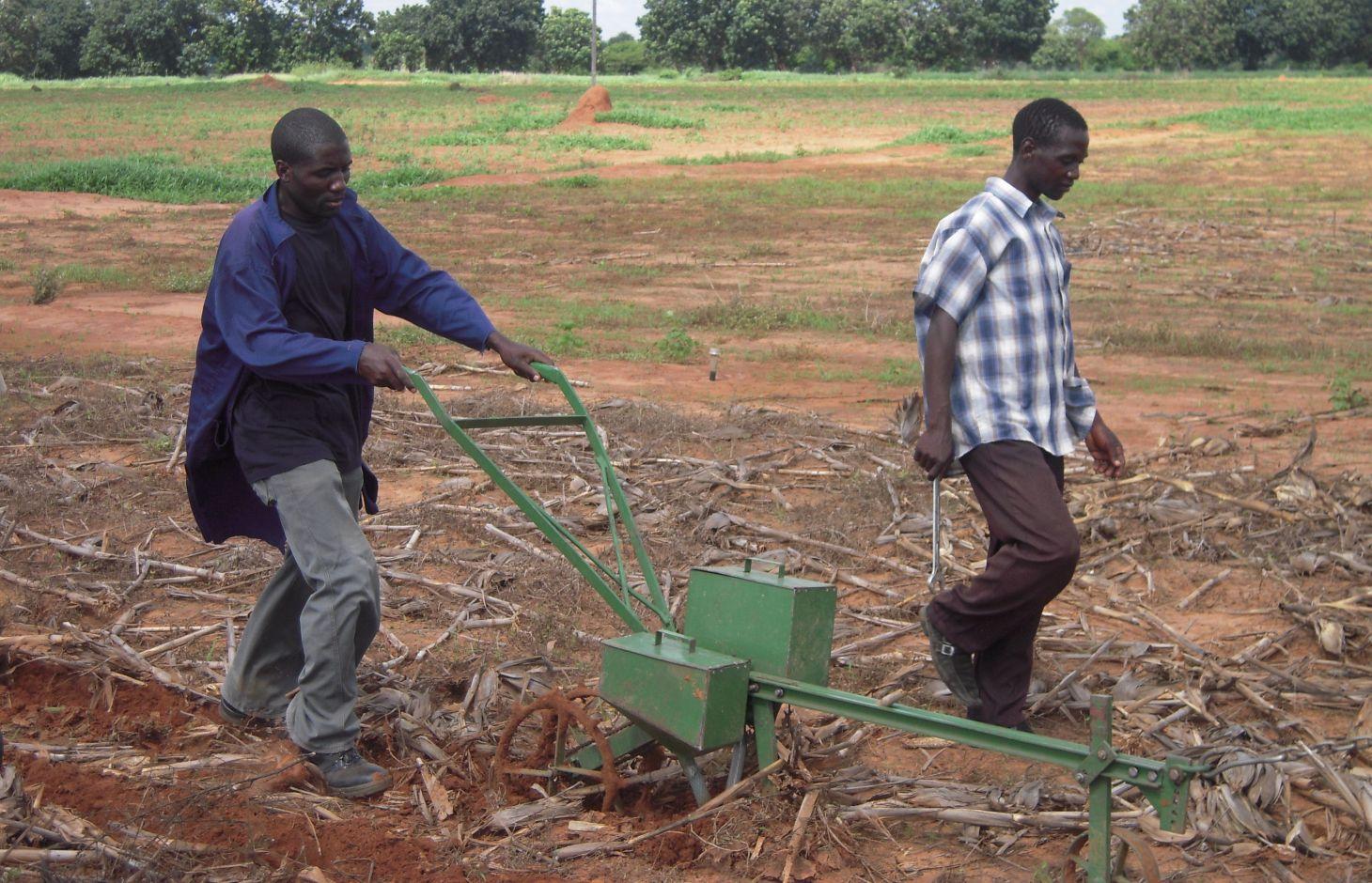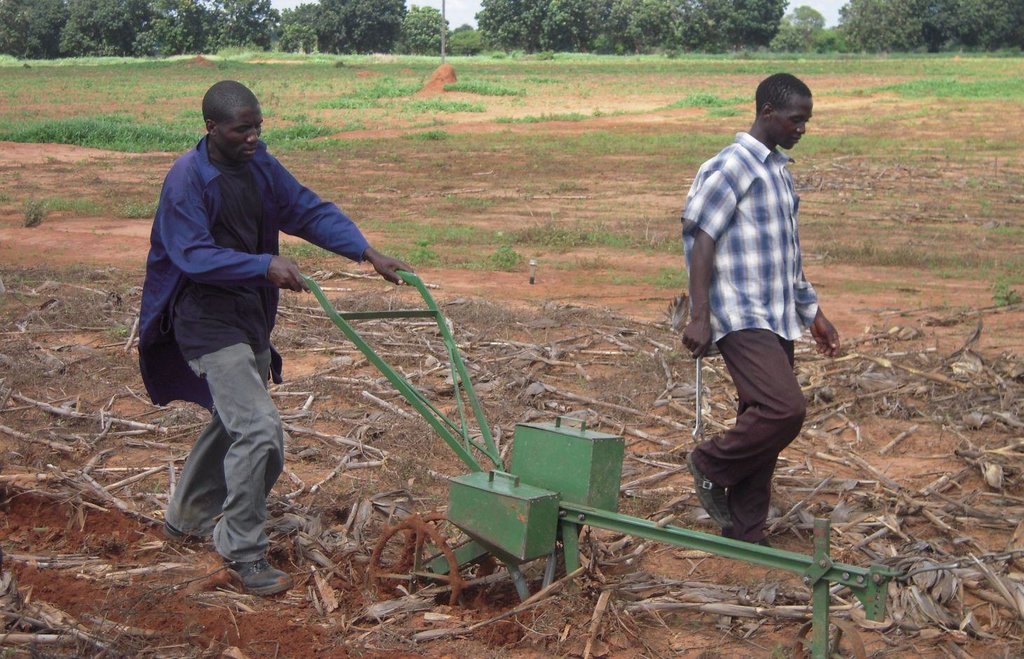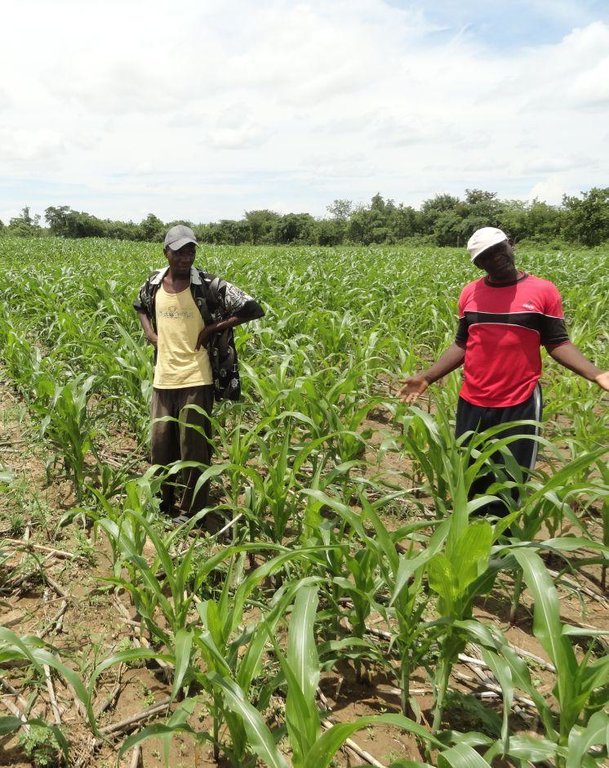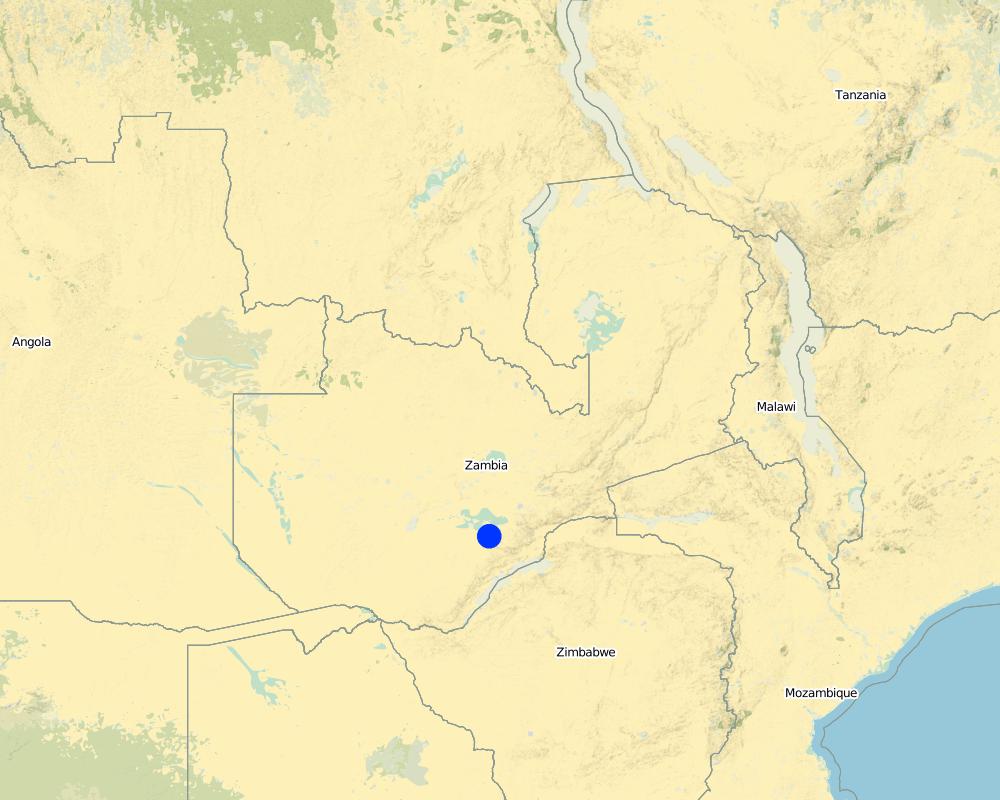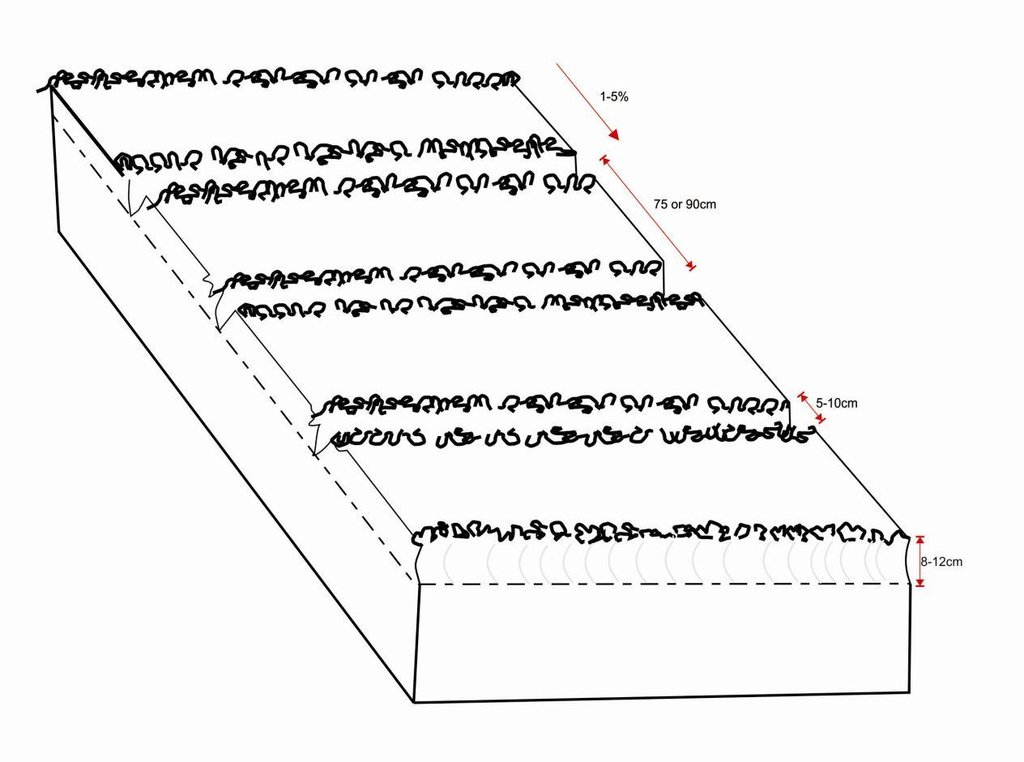Animal Draft Zero-Tillage [Замбия]
- Создание:
- Обновить:
- Составитель: Silenga Wamunyima
- Редактор: –
- Рецензенты: Alexandra Gavilano, Fabian Ottiger
Direct Planting
technologies_1140 - Замбия
Просмотреть разделы
Развернуть все Свернуть все1. Общая информация
1.2 Контактные данные специалистов и организаций, участвующих в описании и оценке Технологии
Специалист по УЗП:
Katoweji Alfred
Golden Valley Agricultural Research Trust
Замбия
Специалист по УЗП:
Ndandula Sharon
Golden Valley Agricultural Research Trust
Замбия
Название организации (-ий), содействовавших документированию/оценке Технологии (если применимо)
Golden Valley agricultural research trust (Golden Valley agricultural research trust) - Замбия1.3 Условия, регламентирующие использование данных, собранных ВОКАТ
Составитель и ответственный(-ые) специалист(-ы) согласны с условиями, регламентирующими использование собранных ВОКАТ данных:
Да
1.5 Ссылка на Анкету (ы) по Подходам УЗП (документируется с использованием ВОКАТ)
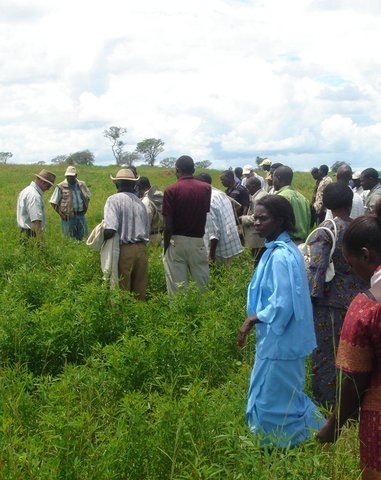
Participatory Research and Development [Замбия]
This is a collaborative process between researchers and farmers for developing and adapting new technologies that focus on incorporating the perspectives and inputs from the farmers into the development process.
- Составитель: Arthur Chomba
2. Описание Технологии УЗП
2.1 Краткое описание Технологии
Определение Технологии:
Animal draft zero-till involves the use of an animal drawn mechanical planter to plant directly in untilled soil to minimize soil disturbance and leave a cover of crop residues to conserve the soil and water.
2.2 Подробное описание Технологии
Описание:
Zero-tillage takes advantage of the beneficial effects of biological processes to loosen the soil and to improve fertility. The organic matter from these processes aggregate the soil while the movement of soil organisms like worms and termites loosen the soil. This is called biological tillage and replaces mechanical tillage. The untilled soil surface covered by residues will require a planter specialized to plant in these conditions. In a sense, adopting zero-till does actually require a zero-till planter. The development of the strip-planter has made zero-till a viable option for animal draft farmers, which until now was not possible due to the unavailability or high cost of zero-till planters. The new planter is both cheap and easy to manufacture locally. The planter uses a narrow tine to open a planting furrow and seed/fertilizer is metered by vertically rotating plates. The planter is pulled by oxen and can plant rows of 75cm or 90cm rows with an intra-row which is determined by the seed plate used (3, 4, 5,…… seeds/m). The planting technology needs to be complemented with sound residue cover and weeding management practices.
Purpose of the Technology: The planter enables planting and fertilizing in untilled soil so that the soil residue cover and soil structure are preserved and can be used sustainably. The protective soil cover reduces evaporation and enhances infiltration while the improved soil structure and organic matter content increases soil water storage making zero tillage an important drought mitigating strategy. The immediate benefits of adopting zero-till are the possibility to plant a bigger area quickly and in time as well as the reduced soil erosion.
Establishment / maintenance activities and inputs: The first step in establishing zero-till is to assess the soil condition and levels of degradation. Where possible tests should be carried out but where not, the farmer needs to start on a small plot to check if there will be yield reduction from not tilling the soil. Where soils are severely degraded, an establishment phase should be embarked on where reduced tillage is practiced until the soil structure has recovered sufficiently to support crop growth without tillage. Liming acidic soils followed by a final ploughing will be required in the first year to correct the soil pH which otherwise will be difficult to correct once conservation tillage has been established. The organic matter levels need to be increased by increasing the amount of residues produced by the crop (i.e. the yields) and retaining these as soil cover. The next establishment activity is the purchase of the planter unit. Maintenance activities include planting and fertilizing in the same operation and weeding. Weeding will have to involve herbicide use to handle increased weed densities implying that spraying will become a major operation. In addition to the normal conventional inputs, herbicides will also become a major input and cost.
Natural / human environment: Zero-till has been applied in a wide range of bio-physical environments but mostly by the large scale farmers. The unavailability and high cost of specialized zero-till planter for small-scale farming has resulted in low adoption rates. The development of the Magoye Planter creates new opportunities for this practice. The farmer has to have sufficient knowledge to assess the soil condition and decide if is too degraded for zero-till or how long the transitional phase should be. Literacy is essential as the farmers will have to learn new approaches on weed control, pest control and crop rotations and adapt practices to suit his/her specific conditions.
2.3 Фотографии, иллюстрирующие Технологию
2.5 Страна/ регион/ места, где применяется Технология, информация о которых собрана в данной Анкете
Страна:
Замбия
Административная единица (Район/Область):
Zambia/Southern Province
Более точная привязка места:
Mazabuka/Magoye
Пояснения:
Total area covered by the SLM Technology is 0.56 km2.
Zero-Till with the Magoye planter technology was introduced in 2011 and is only in its second season of use. Only four farmers have adopted the technology although it has not yet been officially launched and promoted.
Map
×2.6 Сколько лет применяется данная Технология
Если год начала применения Технологии достоверно неизвестен, дайте примерную оценку:
- менее 10 лет назад (недавняя)
2.7 Внедрение Технологии
Укажите, как именно Технология УЗП была внедрена:
- в качестве научного/ полевого эксперимента
Пояснения (тип проекта и т.д.):
Development of the Magoye planter began in 2008 in response to farmers’ feedback on the Magoye Ripper. Farmers started adopting the technology in 2011
3. Классификация Технологии УЗП
3.2 Текущий(-ие) тип(-ы) землепользования на территории, где применяется Технология

Пахотные угодья и плантации
- Однолетние культуры
Ежегодный урожай - Уточните культуры:
- зерновые культуры - кукуруза
- Annual cropping is the main source of livelihood.
Число урожаев за год:
- 1
Поясните:
Longest growing period in days: 135Longest growing period from month to month: mid Nov to end of March

Пастбищные угодья
Экстенсивный выпас:
- Полукочевое скотоводство
- Nearly half of the farmers own cattle but these are not sold regularly, only for school fees and ceremonies. Livestock is grazing on crop residues
Пояснения:
Livestock density (if relevant):
1-10 LU /km2
Major land use problems (compiler’s opinion): Loss of soil structure and low soil fertility
Major land use problems (land users’ perception): Droughts and dry spell
3.4 Водоснабжение
Обеспеченность водой участков, где реализуется Технология :
- богарные земли
3.6 Мероприятия УЗП, выполняемые в рамках Технологии

Агрономические мероприятия
- A1: Растительный/ почвенный покров
- A2: Органическое вещество/ почвенное плодородие
- A3: Поверхностная обработка почв
- A4: Глубокая обработка почв
- A5: Семенное хозяйство, селекция, применение улучшенных сортов
- A6: Управление остатками
- А7: Другие
А3: Дифференцируйте системы обработки почв:
A 3.1: Без обработки почвы
Пояснения:
Specification of other agronomic measures: Zero till, Crop residue
Type of agronomic measures: early planting, mulching, manure / compost / residues, mineral (inorganic) fertilizers, soil conditioners (lime, gypsum), zero tillage / no-till
3.7 Основные проблемы деградации земель, на решение которых направлена Технология

водная эрозия почв
- ВЭп: поверхностная эрозия/смыв верхних почвенных горизонтов

ухудшение химических свойств почв
- Хп: Снижение плодородия и уменьшение содержания органического вещества (вызванное не эрозией, а другими причинами)

ухудшение физических свойств почв
- Фк: растрескивание и коркообразование

биологическая деградация
- Бф: утрата биологической составляющей почв
Пояснения:
Main causes of degradation: soil management (Overploughing, soil nutrient mining), crop management (annual, perennial, tree/shrub) (Monocropping), overgrazing (Overgrazing of crop residues), poverty / wealth (Charcoal burning, under application of fertilizer), inputs and infrastructure: (roads, markets, distribution of water points, other, …) (high cost of fertilizer)
Secondary causes of degradation: deforestation / removal of natural vegetation (incl. forest fires) (Charcoal burning), Heavy / extreme rainfall (intensity/amounts) (Overgrazing of crop residues), droughts, land tenure (Communal land overexploited), education, access to knowledge and support services (inadequate extension staff), governance / institutional (lack of credit facilities)
3.8 Предотвращение и снижение деградации земель, или восстановление нарушенных земель
Укажите цель Технологии по отношению к деградации земель :
- предотвращение деградации земель
- снижение деградации земель
Пояснения:
Secondary goals: rehabilitation / reclamation of denuded land
4. Технические характеристики, мероприятия по практической реализации, вложения и стоимость
4.1 Технический рисунок, иллюстрирующий Технологию
Спецификация (пояснения к техническому рисунку):
Planting lines are done at a depth of 8-12cm with inter row of 75 or 90cm. The width of the open furrow is 5-10cm wide. Planting rows are done across the slope to reduce runoff, these planting rows are done when the soil is moist during the rainy season and planting is done at the same time with land preparation. Farmers in Monze have combined ripping and zero till together. In the dry season they rip with the Magoye Ripper or GART Planter and later when the soil is moist use a zero till implement to plant.
Location: Magoye. Mazabuka/Southern Province/Zambia
Date: 2014-06-29
Technical knowledge required for field staff / advisors: high (This is a new technology and the extension staff must be able to help farmers troubleshoot and adapt the technology to local conditions.)
Technical knowledge required for land users: moderate (The farmers have to adopt new soil management practices, crop rotations and adapt the weeding approaches to complement the planting technology)
Main technical functions: improvement of surface structure (crusting, sealing), improvement of topsoil structure (compaction), increase of infiltration, increase / maintain water stored in soil
Secondary technical functions: control of raindrop splash, improvement of ground cover, improvement of subsoil structure (hardpan), increase in organic matter, increase in nutrient availability (supply, recycling,…), increase of groundwater level / recharge of groundwater, water harvesting / increase water supply, improvement of water quality, buffering / filtering water
Early planting
Material/ species: maize
Quantity/ density: 44,000 pla
Remarks: 25cm intra row by 75cm
Mulching
Material/ species: crop residues
Quantity/ density: 3ton/ha
Remarks: uniformly spread
Manure / compost / residues
Material/ species: crop residues
Quantity/ density: 3ton/ha
Remarks: uniformly spread
Mineral (inorganic) fertilizers
Material/ species: basal and top dressing
Quantity/ density: 400kg/ha
Remarks: spot application
Soil conditioners (lime, gypsum)
Material/ species: lime
Quantity/ density: 1ton/ha
Remarks: broadcast
Автор:
Silenga Wamunyima, Box 670577, Mazabuka, Zambia
4.2 Общая информация по необходимым вложениям и стоимости
другая/ национальная валюта (название):
Kwacha
Если это необходимо, укажите обменный курс от доллара США к местной валюте (например, 1 доллар США = 79,9 бразильского реала): 1 доллар США =:
5,0
Укажите среднюю дневную заработную плату наемных работников:
2.40
4.3 Мероприятия, необходимые для начала реализации
| Деятельность | Время (сессия) | |
|---|---|---|
| 1. | Purchase a magoye planter | |
| 2. | Purchase a knapsack sprayer |
Пояснения:
Life span of the magoye planter: 15 years
Life span of the knapsack sprayer: 5 years
4.4 Вложения и затраты, необходимые для начала реализации
| Опишите затраты | Единица | Количество | Затраты на единицу | Общая стоимость на единицу | % затрат, оплаченных землепользователями | |
|---|---|---|---|---|---|---|
| Оборудование | Magoye Planter | piece | 1,0 | 500,0 | 500,0 | 100,0 |
| Оборудование | Knapsack sprayer | piece | 1,0 | 80,0 | 80,0 | 100,0 |
| Общая стоимость запуска Технологии | 580,0 | |||||
| Общие затраты на создание Технологии в долларах США | 116,0 | |||||
Пояснения:
Duration of establishment phase: 2 month(s)
4.5 Поддержание/ текущее обслуживание
| Деятельность | Сроки/ повторяемость проведения | |
|---|---|---|
| 1. | Slashing, spreading residues | May-June every year after harvest |
| 2. | Liming | Nov - Dec every 3years |
| 3. | Planting and fertilizing | Nov-Dec at onset of rain |
| 4. | Chemical weeding | 3 times per growing season |
| 5. | Harvesting | May-June |
4.6 Стоимость поддержания/ текущего обслуживания ( в год)
| Опишите затраты | Единица | Количество | Затраты на единицу | Общая стоимость на единицу | % затрат, оплаченных землепользователями | |
|---|---|---|---|---|---|---|
| Оплата труда | Slashing, spreading residues | person days | 8,0 | 2,5 | 20,0 | 100,0 |
| Оплата труда | Liming | person days | 2,0 | 2,5 | 5,0 | 100,0 |
| Оплата труда | Chemical weeding | person days | 24,0 | 1,0 | 24,0 | 100,0 |
| Оплата труда | Harvesting | person days | 8,0 | 2,5 | 20,0 | 100,0 |
| Оборудование | Animal traction for planting and fertilizing | ha | 1,0 | 40,0 | 40,0 | 100,0 |
| Посадочный материал | Seeds | kg | 20,0 | 2,5 | 50,0 | 100,0 |
| Посадочный материал | Fertilizer | kg | 400,0 | 0,8 | 320,0 | 100,0 |
| Посадочный материал | Herbicides | l | 5,0 | 6,0 | 30,0 | 100,0 |
| Посадочный материал | Lime | ton | 1,0 | 42,0 | 42,0 | 100,0 |
| Общая стоимость поддержания Технологии | 551,0 | |||||
| Общие затраты на поддержание Технологии в долларах США | 110,2 | |||||
Пояснения:
Machinery/ tools: The Magoye planter
Calculation are for 1ha of maize under strip tillage based conservation tillage and costs are for the Zambia situation in Magoye as of August 2012.
4.7 Наиболее значимые факторы, влияющие на стоимость затрат
Опишите наиболее значимые факторы, влияющие на стоимость затрат:
The weed control method is the main determinate factor depending on whether the farmer uses hand hoe or herbicides. Weed densities are higher in unploughed fields increasing the labour requirements/costs by a factor of about 5 if hand weeding is used instead of herbicides. Another major cost is that of fertilizer which makes up about half the cost hence the total cost will vary significantly depending on fertilizer cost.
5. Природные и социально-экономические условия
5.1 Климат
Среднегодовое количество осадков
- < 250 мм
- 251-500 мм
- 501-750 мм
- 751-1000 мм
- 1001-1500 мм
- 1501-2000 мм
- 2001-3000 мм
- 3001-4000 мм
- > 4000 мм
Агроклиматическая зона
- полузасушливая
Thermal climate class: subtropics. 3 distinct seasons – summer, winter and one rainy season
5.2 Рельеф
Склоны (преобладающие):
- пологие (0-2%)
- покатые (3-5%)
- покато-крутые (6-10%)
- крутые (11-15%)
- очень крутые (16-30%)
- чрезвычайно крутые (31-60%)
- обрывистые (>60%)
Формы рельефа:
- плато/ равнины
- гребни хребтов/холмов
- склоны гор
- склоны холмов
- подножья
- днища долин
Зона высотной поясности:
- 0-100 м над уровнем моря
- 101-500 м н.у.м.
- 501-1000 м н.у.м.
- 1001-1500 м н.у.м.
- 1501-2000 м н.у.м.
- 2001-2500 м н.у.м.
- 2501-3000 м н.у.м.
- 3001-4000 м н.у.м.
- > 4 тыс. м н.у.м.
5.3 Почвы
Средняя мощность почв:
- поверхностные (0-20 см)
- неглубокие (21-50 см)
- умеренно глубокие (51-80 см)
- глубокие (81-120 см)
- очень глубокие (> 120 см)
Гранулометрический состав (верхнего горизонта):
- средние фракции (суглинистый, супесчаный)
- тонкодисперсный/ тяжёлый (глинистый)
Содержание органического вещества в верхнем горизонте:
- низкое (< 1%)
5.4 Доступность и качество воды
Уровень грунтовых вод:
> 50 м
Доступность поверхностных вод:
средняя
Качество воды (без обработки):
питьевая вода плохого качества (необходима обработка)
5.6 Характеристика землепользователей, применяющих Технологию
Доходы из других источников:
- 10-50% всех доходов
Относительный уровень достатка:
- очень плохой
- плохой
Индивидуальное или коллективное хозяйство:
- частное/ домовладение
Пол:
- мужчины
Укажите другие важные характеристики землепользователей:
Land users applying the Technology are mainly common / average land users
Difference in the involvement of women and men: The technology is applied mostly by men since most households are male headed and animal traction operation are reserved for men
Population density: 10-50 persons/km2
Annual population growth: 3% - 4%
8% of the land users are rich and own 15% of the land (own more than 10 cattle).
8% of the land users are average wealthy and own 15% of the land (own between 5 and 10 cattle).
16% of the land users are poor and own 20% of the land (own less than 5 cattle).
68% of the land users are poor and own 40% of the land (do not own cattle).
Off-farm income specification: sale of rainfed crops makes up about half of their income, the remainder coming from sale of livestock, petty trading, hiring out labour and remittances
Market orientation of production system: subsistence (self-supply), subsistence (self-supply), mixed (subsistence/ commercial
5.7 Средняя площадь земель, используемых землепользователями с применением Технологии
- < 0,5 га
- 0,5-1 га
- 1-2 га
- 2-5 га
- 5-15 га
- 15-50 га
- 50-100 га
- 100-500 га
- 500-1000 га
- 1000-10000 га
- > 10000 га
Считается ли это мелким, средним или крупным хозяйством (по местным масштабам)?
- мелкое
Пояснения:
Average area of land owned or leased by land users applying the Technology: 1-2 ha, 2-5 ha, 5-15 ha, 5-15 ha, 15-50 ha, 15-50 ha, 50-100 ha
5.8 Собственность на землю, права на земле- и водопользование
Землевладелец:
- индивидуальная, не оформленная в собственность
Право землепользования:
- неограниченное (неконтролируемое)
- индивидуальное
- Land is apportioned by traditional leaders
Право водопользования:
- неограниченное (неконтролируемое)
- Land is apportioned by traditional leaders
5.9 Доступ к базовым услугам и инфраструктуре
медицинское обслуживание:
- плохой
- средний
- хорошая
образование:
- плохой
- средний
- хорошая
технические консультации:
- плохой
- средний
- хорошая
занятость (вне хозяйства):
- плохой
- средний
- хорошая
рынки:
- плохой
- средний
- хорошая
электроснабжение:
- плохой
- средний
- хорошая
транспорт и дорожная сеть:
- плохой
- средний
- хорошая
водоснабжение и канализация:
- плохой
- средний
- хорошая
финансовые услуги:
- плохой
- средний
- хорошая
6. Воздействия и заключительные положения
6.1 Влияние Технологии УЗП в пределах территории ее применения
Социально-экономическое воздействие
Продуктивность
производство сельскозяйственных культур
производство кормов
риск потери продуктивности
площадь, используемая для производства продукции
Количество до применения УЗП :
2-3ha
Количество после применения УЗП:
>10
Доходы и затраты
доходы хозяйства
разнообразие источников дохода
объем работ
Социальное и культурное воздействие
возможности отдыха и рекреации
Экологическое воздействие
Водный цикл/ поверхностный сток
качество воды
сбор воды/ водоудержание
поверхностный сток
испарение
Почвы
влажность почв
почвенный покров
утрата почв
образование корки на поверхности почв/ запечатывание
уплотнение почв
круговорот/ восполнение питательных веществ
засоленность
почвенное / подземное органическое вещество/ углерод
Биоразнообразие: растительность, животный мир
биомасса/ содержание углерода в надземной биомассе
Климат и снижение риска стихийных бедствий
выбросы углекислого газа и парниковых газов
6.2 Влияние Технологии за пределами территории ее применения
доступность воды
подтопление ниже по течению
загрязнение подземных/ речных вод
ущерб прилегающим полям
6.3 Подверженность и чувствительность Технологии УЗП к постепенным изменениям климата и экстремальным погодным явлениям/ стихийным бедствиям, связанным с изменением климата (в понимании землепользователей)
Постепенное изменение климата
Постепенное изменение климата
| Сезон | увеличение или уменьшение | Насколько успешно Технология справляется с этим? | |
|---|---|---|---|
| среднегодовые температуры | увеличилось | не известно |
Экстремальные явления, связанные с изменением климата (стихийные бедствия)
Погодные стихийные бедствия
| Насколько успешно Технология справляется с этим? | |
|---|---|
| местные ливневые дожди | хорошо |
| местные ураганы | не известно |
Стихийные бедствия климатического характера
| Насколько успешно Технология справляется с этим? | |
|---|---|
| засухи | хорошо |
Гидрологические стихийные бедствия
| Насколько успешно Технология справляется с этим? | |
|---|---|
| регулярные наводнения (выход рек из берегов) | плохо |
Другие воздействия, связанные с изменением климата
Другие воздействия, связанные с изменением климата
| Насколько успешно Технология справляется с этим? | |
|---|---|
| сокращение вегетационного периода | хорошо |
6.4 Анализ эффективности затрат
Насколько получаемый результат сопоставим с первоначальными вложениями (с точки зрения землепользователей)?
Эффективность затрат в краткосрочной перспективе:
позитивное
Эффективность затрат в долгосрочной перспективе:
очень позитивное
Насколько получаемый результат сопоставим с текущими расходами по поддержанию технологии (с точки зрения землепользователей)?
Эффективность затрат в краткосрочной перспективе:
позитивное
Эффективность затрат в долгосрочной перспективе:
очень позитивное
Пояснения:
Timely and quicker planting enables larger areas to be planted and with less labour in the short term. Improved soil structure and soil fertility leads to higher yields and better resilience to droughts in the long term
6.5 Внедрение Технологии
- отдельные случаи/ эксперимент
Среди применяющих Технологию землепользователей, какова доля лиц, применяющих её по собственной инициативе, т.е. без какого-либо материального стимулирования со стороны?
- 0-10%
Пояснения:
4 land user families have adopted the Technology without any external material support
Comments on spontaneous adoption: The Magoye planter has not yet been officially launched or promoted and the farmers currently using the technology heard of it by word of mouth and insisted on purchasing
There is a strong trend towards spontaneous adoption of the Technology
There has been numerous inquiries to purchase the Magoye planter even before it can be promoted
6.7 Сильные стороны/ преимущества/ возможности Технологии
| Сильные стороны/ преимущества/ возможности по мнению землепользователей |
|---|
|
Enables early planting How can they be sustained / enhanced? Plant in with the first rain |
|
Quicker planting enables the planting of larger areas How can they be sustained / enhanced? Plant the seed and fertilize in one operation |
|
reduced workload How can they be sustained / enhanced? Encourage minimum tillage |
| Сильные стороны/ преимущества/ возможности по мнению составителя или других ключевых специалистов |
|---|
|
Enables early planting How can they be sustained / enhanced? Plant in November with the first heavy rain |
|
Quicker planting enables the planting of larger areas How can they be sustained / enhanced? Use herbicides because without them, the capacity to weed will limit the production capacity |
|
Preserves soil cover and reduces soil disturbance How can they be sustained / enhanced? Training in residue management and zero till |
6.8 Слабые стороны/ недостатки/ риски Технологии и пути их преодоления
| Слабые стороны/ недостатки/ риски по мнению землепользователей | Возможные пути их преодоления/снижения? |
|---|---|
| The purchase price of the Magoye planter is quite high | Subsidize the implement |
| Excessive weeds and lack of information on herbicide use | More training on herbicide use |
| Слабые стороны/ недостатки/ риски по мнению составителя или ответственных специалистов | Возможные пути их преодоления/снижения? |
|---|---|
| The purchase price for the planter is on the higher side making it affordable only to the larger small-scale farmers | the price is likely to go down when the planter is mass produced |
| difficult to control weeds in the absence of herbicides | use herbicides |
7. Справочные материалы и ссылки
7.1 Методы сбора/ источники информации
7.2 Ссылки на опубликованные материалы
Название, автор, год публикации, ISBN:
Social-economic analysis of conservation agriculture in southern Africa, FAO, 2011
Где опубликовано? Стоимость?
FAO
Название, автор, год публикации, ISBN:
Conservation farming in Zambia, Steven Haggblade, Gelson Tembo, October 2003
Где опубликовано? Стоимость?
Indaba project, Michigan state university
Название, автор, год публикации, ISBN:
Conservation farming in Zambia, Conservation farming unit (CFU), 2011
Где опубликовано? Стоимость?
cfu@zamnet.zm
Ссылки и модули
Развернуть все Свернуть всеСсылки

Participatory Research and Development [Замбия]
This is a collaborative process between researchers and farmers for developing and adapting new technologies that focus on incorporating the perspectives and inputs from the farmers into the development process.
- Составитель: Arthur Chomba
Модули
Нет модулей


